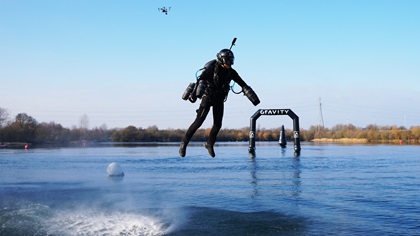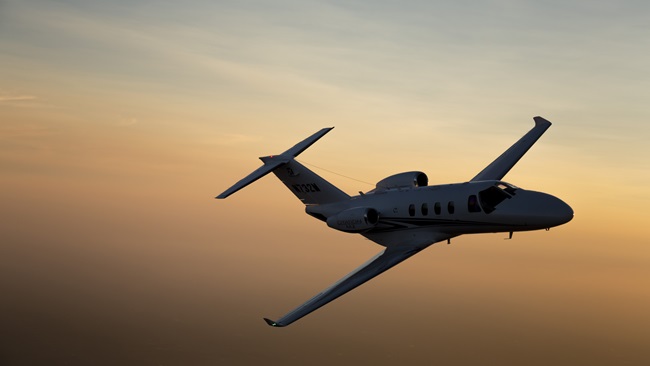Jet suit rescue demonstrated
British inventor Richard Browning donned a backpack and gauntlets fitted with gas turbine engines that collectively produce 1,050 brake horsepower and swooped to the simulated rescue of a hiker atop an English hill.
The September 29 demonstration was the product of a collaboration between Gravity Industries, a firm Browning launched on April 1, 2017, to build a jet suit, and the Great Northern Air Ambulance Service, a charitable organization funded entirely by donations that provides emergency care in northern England. The service has a history with helicopters, but the Gravity Industries jet suit could make the organization the first in the world to dispatch paramedics with turbines on their wrists.
The jet suit has no lift to spare to retrieve a patient, and flight time is limited to a handful of minutes, though it reduced in the September 29 demonstration the time from arrival to patient contact from about 25 minutes on foot down to a 90-second swoop, a few feet above the ground.
Browning was not available for an interview, though documents provided describe the firm’s ongoing efforts that also include plans to stage jet suit races in Bermuda in March (COVID-19 permitting, one would think). Browning’s firm has offered tethered jet suit flight experiences at the firm’s headquarters near London, though it does not appear that staff will let the jet suits out of their sight: According to one report, Gravity Industries will lease the suits for rescue, military, and entertainment use, but the $440,000 units will remain at company headquarters near Goodwood Estate, home to a legendary British race car event, the Festival of Speed.

“It would be a bit like selling Indy cars,” Browning told Robb Report, though he admitted that “a couple of our clients were very driven to commission their own and having seen they can fly with us, we proceed.”
Five engines, two fitted to gauntlets on each arm, the fifth strapped to the jet suit pilot’s back, produce 317 pounds of thrust, and the rig can carry enough fuel for about four minutes of flight. The maximum potential altitude is 12,000 feet, according to literature provided by the company, but gravity being what it is, Gravity Industries has opted to stick much closer to the ground for safety. A video demonstrating what a jet suit race might look like features a trio of pilots navigating over a pond, with inflatable gates that evoke the Red Bull Air Race defining the course.
The company is working on extending endurance a few minutes with a wingsuit version, and an iteration of that concept allowed Browning to snag a Guinness World Record in November 2019 for the highest velocity achieved to date in a “body-controlled jet engine powered suit (wind guided) at 85.06 mph,” Guinness noted.
Another video on the company website documents the development of the machine, and the inspiration behind it. It also serves as a cautionary tale for anyone who thinks this thing is easy to fly, though Browning has described it as very “intuitive.”



